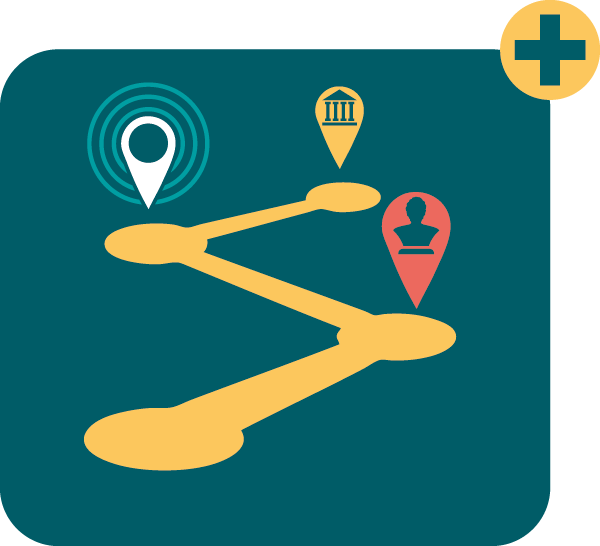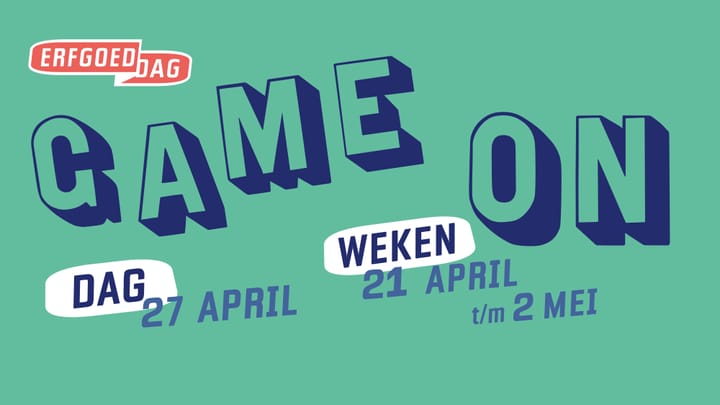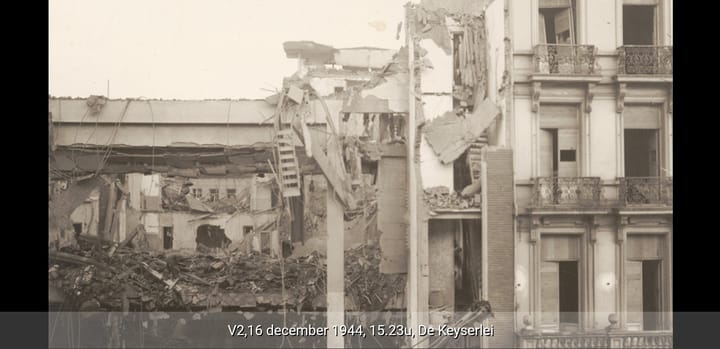The Treasure of Beerlegem, a story in the ErfgoedApp
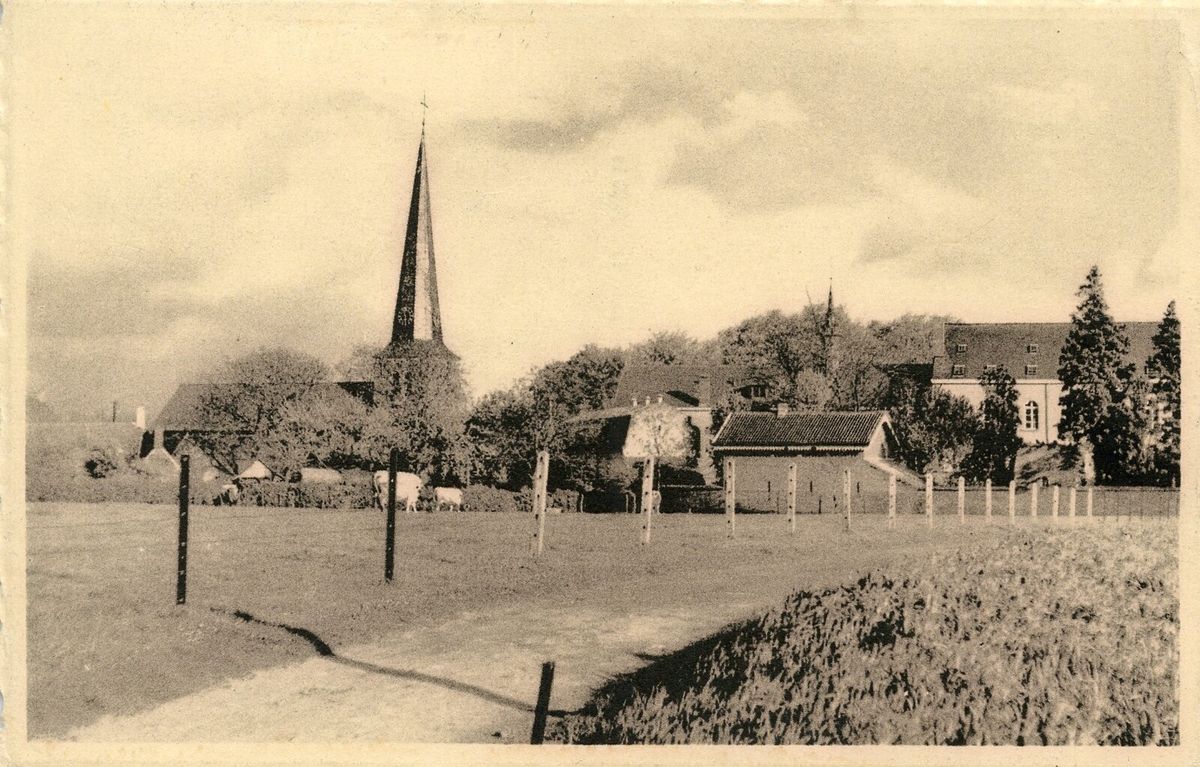
Finding a treasure, it excites the imagination of countless children. And sometimes ... it really happens!
In the 1950s, Hubert De Pessemier, a man who dug up and sold sulfur from the soil, lived in Zwalm. Occasionally while digging, he would find a shard, or a rare pearl. But one day Hubert stumbled upon a beautiful old pot and a spearhead. Soon the remarkable find caught the attention of several archaeologists, and the sand quarry was turned into an archaeological site.
In the years that followed, more than 100 graves would be uncovered at the site. The site turned out to be a large burial site from the Merovingian period, in the early Middle Ages. Back then, at the highest point of the (current) village of Beerlegem, there was a cemetery here. Among the rows of unusual graves, one grave stood out. It was a crypt with an old oak floor and some exceptionally beautiful grave goods: the Treasure of the Lady of Beerlegem ...
Excitement and adventure
The grave of the Lady of Beerlegem is today the highlight of The Treasure of Beerlegem, a child-friendly heritage walk in Zwalm, a municipality in the Flemish Ardennes. When developing the walk, the Flemish Ardennes Heritage Unit deliberately chose the ErfgoedApp You can read in this blog that the creation and design of such a heritage walk can be quite an adventure.
After all, for starters, it was incredibly exciting to dive into the past, look up all sorts of facts and trivia, and go exploring. In addition, a lot of practical things just had to be done, such as mapping out the route. This formed the basis of the heritage story and provided a lot of inspiration for fun and interesting facts. When mapping out the route, we made grateful use of the walking network, so that we could take full advantage of ready-made signage and a safe route.
Then came the content. The highlight was the Merovingian burial site, but we also wanted to take the youngsters step by step back in time. Like a time machine, each POI (point of interest, nvdr) flashes you deeper into the past using a number of elements in the environment and in the landscape. Piece by piece they are anchors from the past, which we linked to life today.
Start at the church, where walkers can compare old photos with the current village scene. What are the differences between before and now? What has changed? To bring past and present very close together, we used a fun application in the ErfgoedApp where you can "scratch away" a photo. Little by little, the underlying picture emerges and you discover the differences.
Further down the walk, and thus further back in time, we show an image of an archaeological site. By scratching away the traces in the landscape on the screen, you bring out the archaeologist in yourself. Gradually the excavation becomes visible. In the next picture you then look for grave goods and other finds. Archaeology is quite exciting and fascinating, even in photographs!

The power of stories
There is no shortage of stories and photos, thanks in part to our local heritage partners. For example, the route also passes an old boarding school. On the Erfgoedbank Vlaamse Ardennen we found dozens of old photos so a story quickly grew about the life of boarding school girls.
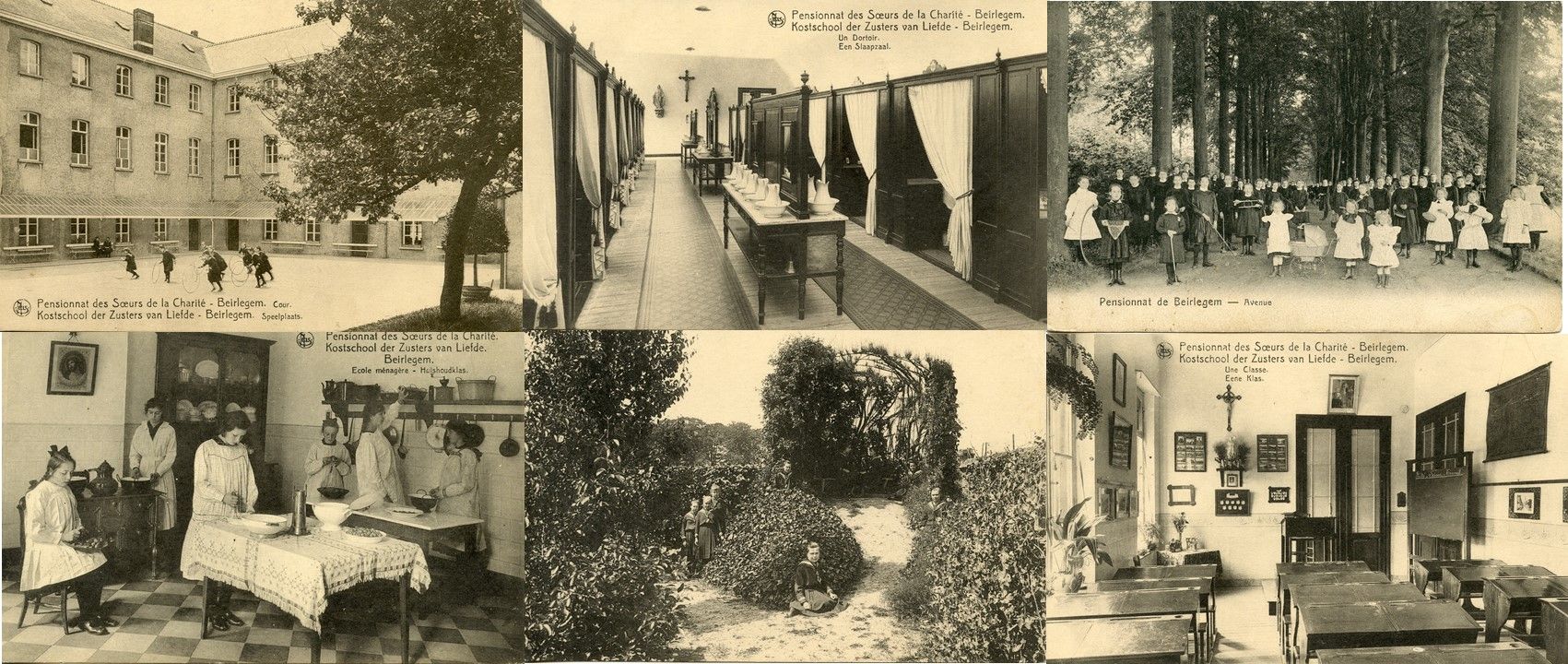
During the walk and in the stories we combine culture and nature, landscape and landscape elements, human interventions of the past and present. The ErfgoedApp once again proved to be a rewarding tool. Play a quiz, watch a movie, scratch away pictures, listen to audio fragments ... in the ErfgoedApp you can do it all. As creator you can easily build in variation, and thus keep the walk interesting.
En route!
The next very important step in the creation process was to write out the story and then break it down into fragments along the route. For this, we appealed to a small test audience. Together we went out on the road. We listened attentively to the reactions of these "test tasters," discovering where the story went too fast or was too drawn out, and where attention waned and more action was needed.
A few adjustments to the storyline later, we managed to ball the texts together into a short and powerful whole. We learned from experience that people on location would rather listen than watch a screen, so we opted for short sound clips. Using a portable digital home studio(what's in a name!), we sought out Mout Uyttersprot to record the texts. With his enthusiastic voice and fine empathy, he brought the story completely to life. The spoken audio guide was ready and could be added to the heritage walk.
A unique man, a unique place
With the spoken audio guide in our pocket, the heritage walk was almost complete. What remained was the ultimate test, namely to try out the walk ourselves a few times. Together with colleague Lien Urmel we set off. And with 23 POI, there was quite a bit to do ... It was enjoyable, and the storyline got better and better.
But the real highlight came one day when we approached the archaeological site. There, in the sand pit, Hubert De Pessemier, the man who discovered the burial site at the time, was still engaged in his passion and work. He was now 90 years old, but from his crane he was still enjoying his work to the fullest. The stories of the excavation, now 70 years ago, rolled out of his memory as if it were yesterday. It was fantastic to take a heritage walk about the past, and to encounter a direct witness just like that. Hubert beamed when he could tell once again about the excavations, his discovery, his life's work, his archaeological treasure he had found. He told us how at the time he even guarded the site to protect the finds from nocturnal treasure hunters, who came armed with shovels to take a look.
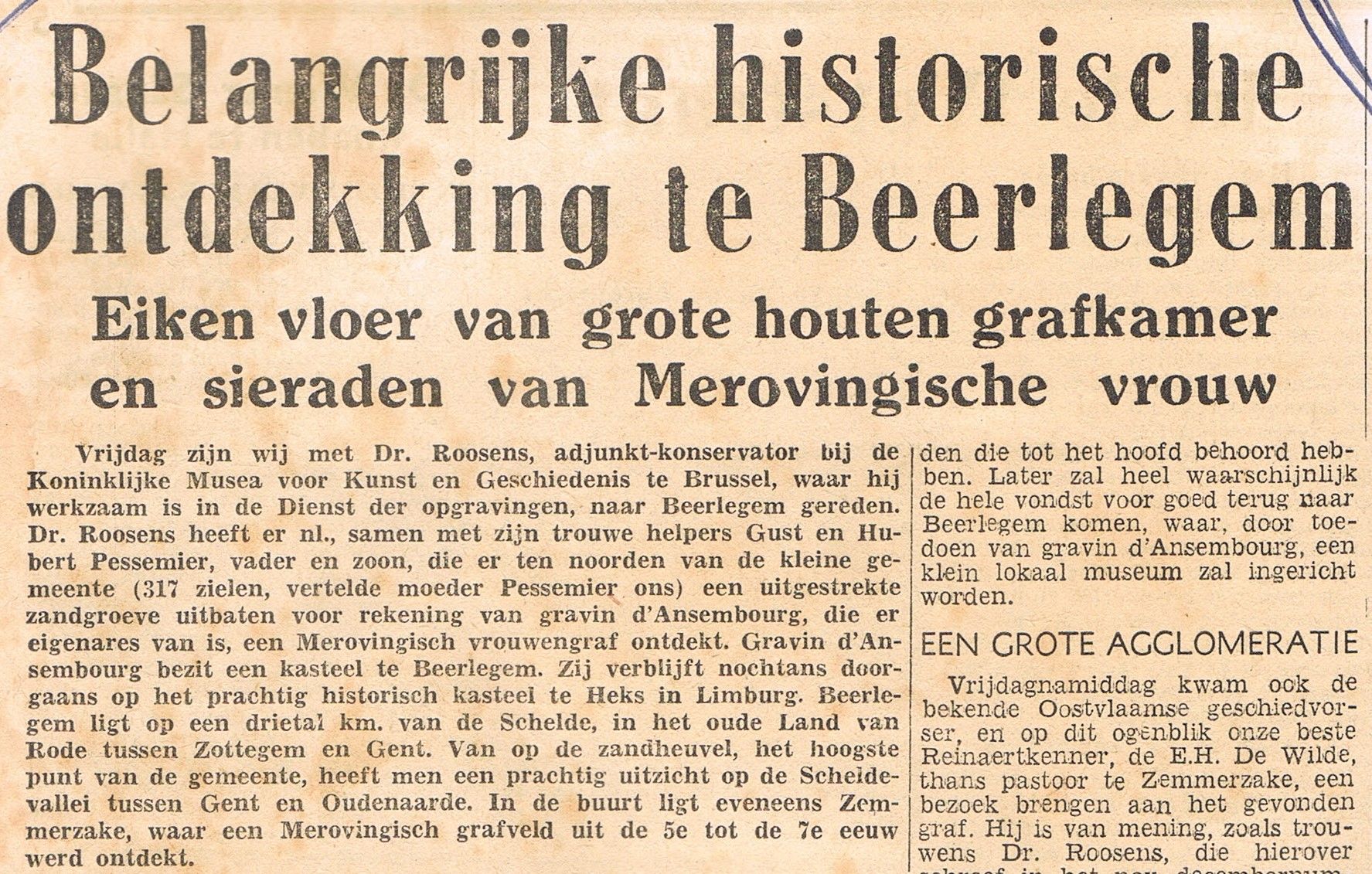

We took some pictures and said goodbye. How great was our disbelief when five days later we received the news that Hubert had passed away. The last witness to this story. Something we thought we could grasp was seeping away. I stared at the email, trying to recall the entire conversation with Hubert in the sand pit. It also emphasizes how important it is to capture all these stories, cherish them and offer them to future generations. We therefore dedicate this walk with great thanks and respect to Hubert De Pessemier and his family. We hope that during this walk many people will join him for a moment in the story of this unique place.
With the ErfgoedApp from FARO you can The Treasure of Beerlegem yourself. Start at the church of Beerlegem.
This walk came about during the project Erfgoed kleurt de Vlaamse Ardennen of the Erfgoedcel Vlaamse Ardennen. We would like to thank everyone who contributed to this story: the community of Zwalm, Archeosite Velzeke, Heemkundekring Zwalm and the De Pessemier family.
